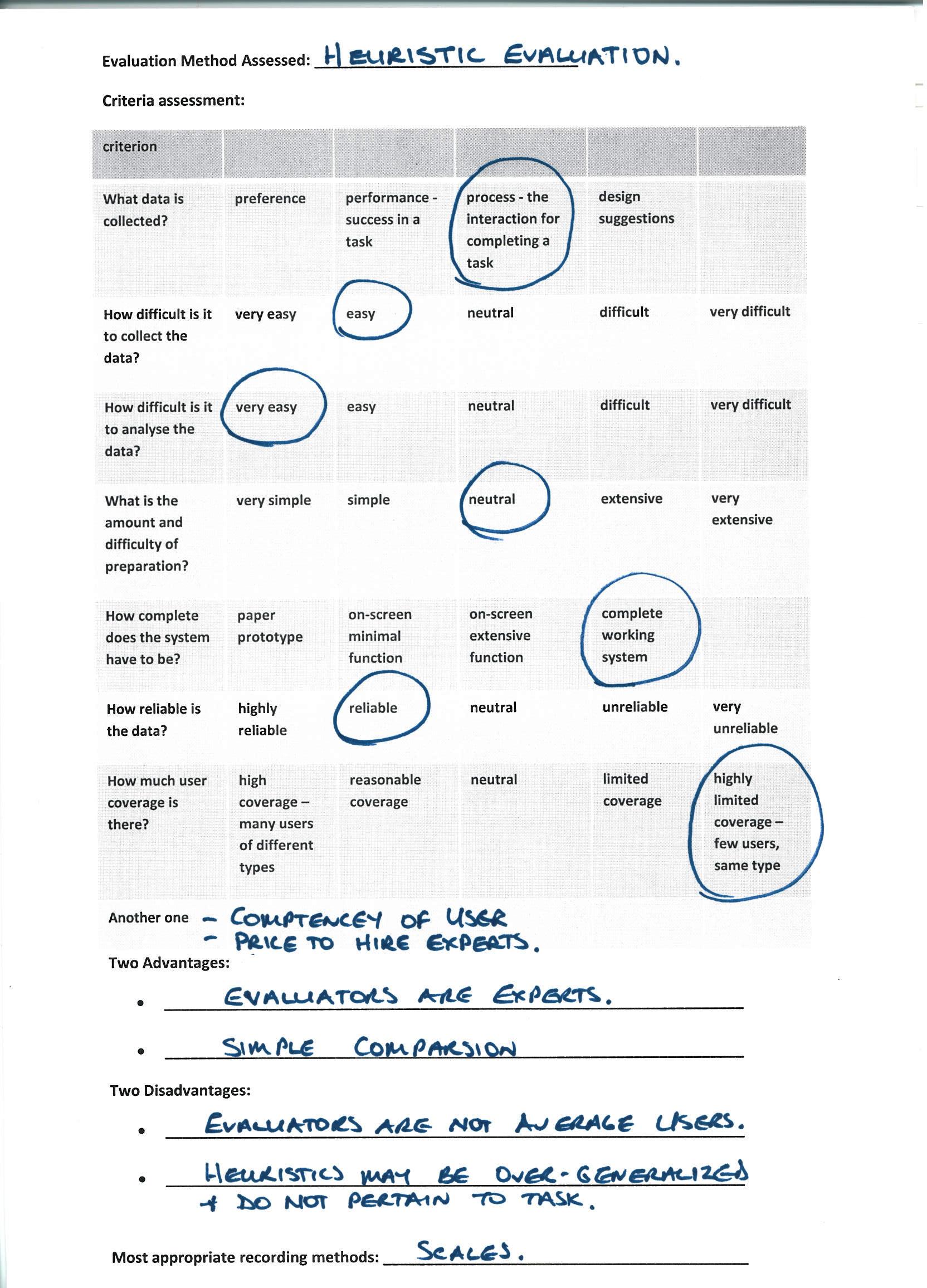My courses comprise lectures, laboratory sessions, and some tutorials. The laboratory sessions revolve around a set of practical exercises given in advance; these exercises are usually closely related to the summative coursework, and are typically done individually with the guidance of a tutor. They include such activities as designing an interface, simple prototyping, and evaluation. The tutorials address the sorts of questions that students might encounter in an examination. They too are given in advance, and students are expected to have attempted some of them before the tutorial. The session entails the students working in groups on the remaining problems, with the tutor available to answer individual questions on any problems. Any significant problems that are mentioned are discussed with all students in a whole-class discussion. A distinctive feature of my lectures is interaction and discussion. This takes the form of asking students to attempt an exercise in the class, with a time limit of five to ten minutes depending on the complexity of the question. I then lead a whole-class discussion, collecting suggestions for solutions from members of the class; these discussions typically take an additional five to ten minutes. I usually ask the students to do these exercises in pairs, although sometimes they are required to do them individually, after which they swap their solutions with the person next to them and engage in pair discussion. If the problem is particularly complex, I may ask them to work in groups of up to four. All my lectures are planned to include at least one such in-class activity, although I often spontaneously introduce additional exercises in lectures if I think it would be useful, and if I know there is time to complete the exercise and discussion before the end of the scheduled hour-long lecture. The following example demonstrates this process as used in 2007/8; the context was teaching first year students about the different evaluation methods. They were given a very brief verbal description and a written summary of each of the evaluation methods. The class was then divided into roughly seven equal sized groups, and each groups was allocated one of the methods. Working in pairs, the students analysed their given method using the criteria list that they were given, as shown below.
I then led a whole-class discussion on the advantages and disadvantages of each method, using only the ideas generated from the students themselves, and writing them on overhead transparencies, one of which is shown below:
Class exercises like these promote engagement, contribution, development of analytic and critical skills, and ownership of the material. The students discovered the advantages and disadvantages of these evaluation methods by themselves: they did not need me to tell them. Having done several lectures in the past where I have painstakingly (and rather boringly) talked through these evaluation methods and their advantages and disadvantages at length, I was delighted to find a more interactive and worthwhile way of covering this material! |

